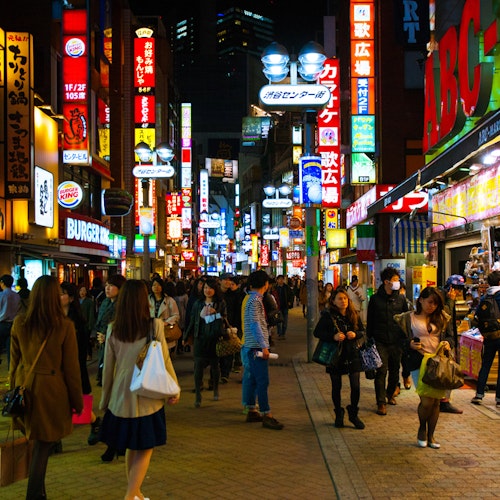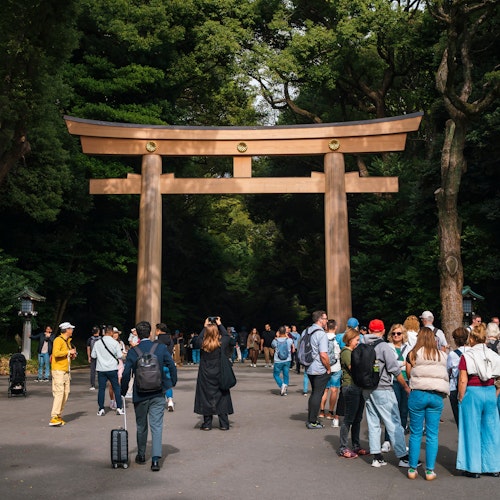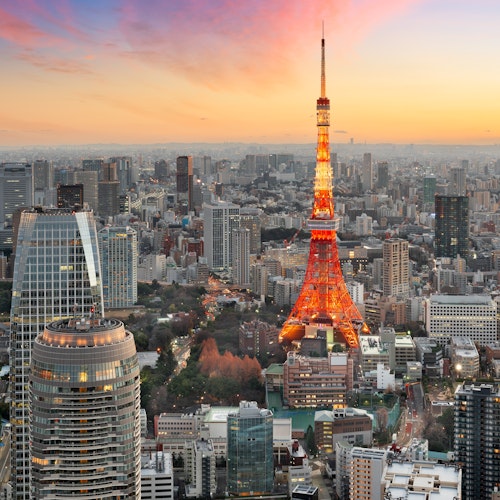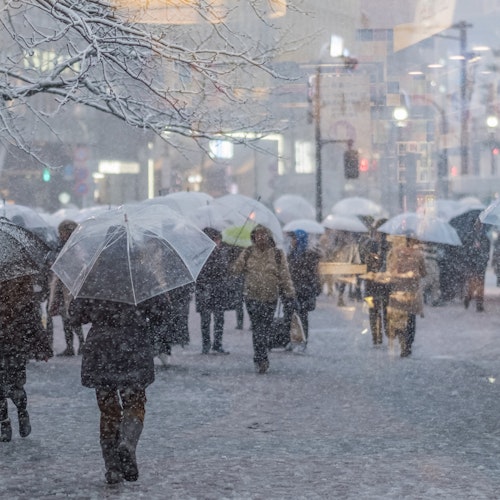
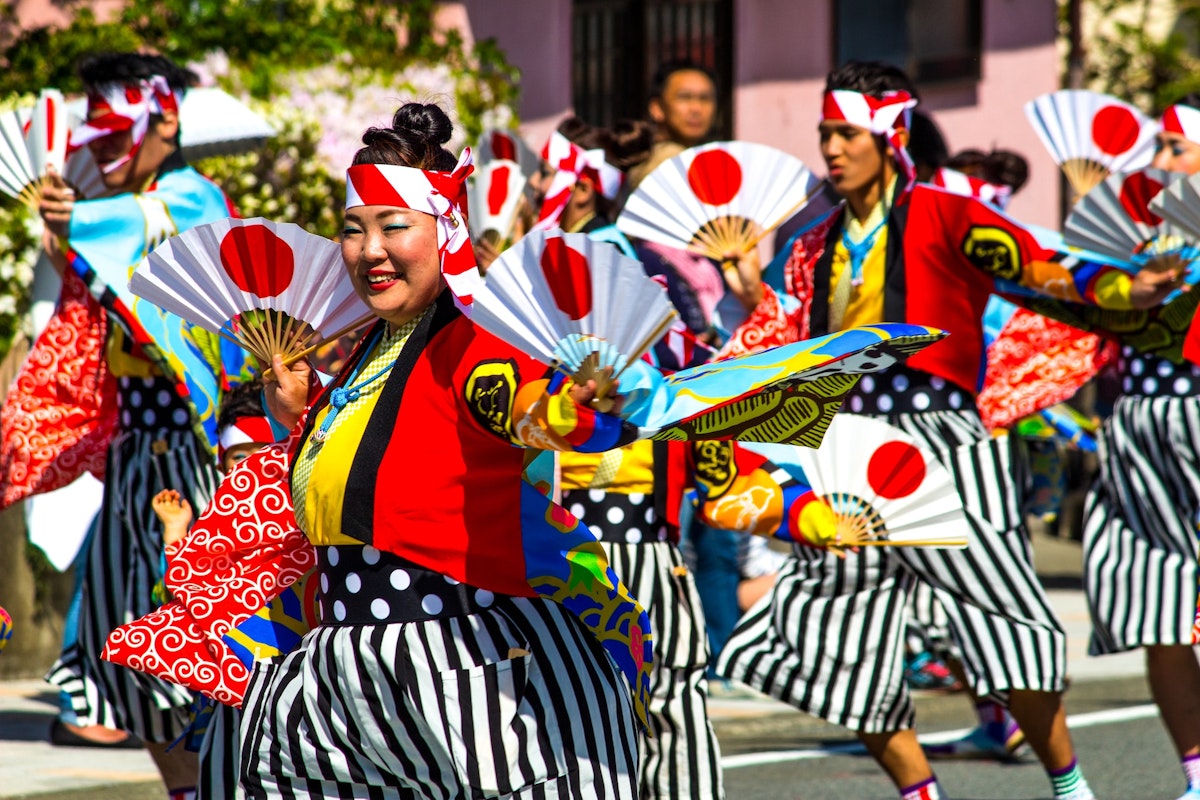
In the land where tradition and modernity dance a harmonious ballet, Japan unravels a vibrant panorama of cultural delights through its myriad festivals or 'matsuri'. A heartbeat pulsating with the rhythm of unity, these events paint a vivid tableau of Japan's rich cultural tapestry. But amongst these, some festivals dare to venture off the beaten track, reveling in their own delightful quirks and oddities. They infuse the air with an undeniable charm, showcasing an unconventional facet of Japan's vibrant spirit that truly defies the norm.
Let's embark on an enchanting odyssey, navigating through Japan's most peculiar festivals. Picture this - men engaged in a daring race down slopes, astride enormous logs; sumo wrestlers partaking in a battle of tears with tiny infants; a mountain caught in a fiery embrace during the chilly winter. Each of these festivals, resplendent in their quirkiness, narrates a fascinating tale about the Land of the Rising Sun and its distinctive culture. They bring forth an idiosyncratic spectacle, reaffirming that in Japan, the unusual is celebrated with gusto.
So, buckle up for an immersive journey through the delightful eccentricities of Japan's festivals, where the extraordinary turns commonplace and each celebration offers a whimsical adventure, illuminating the playful and lively facets of the nation's cultural panorama.
The Hadaka Matsuri, also known as the "Naked Festival," is one of Japan's most unique cultural experiences. Held predominantly at Okayama's Saidaiji Temple, this festival has been a part of Japanese tradition for over half a millennium. Occurring annually in February, the Hadaka Matsuri attracts thousands of men who, wearing only traditional 'fundoshi' loincloths and 'tabi' socks, brave the winter chill to participate in this unique religious event.
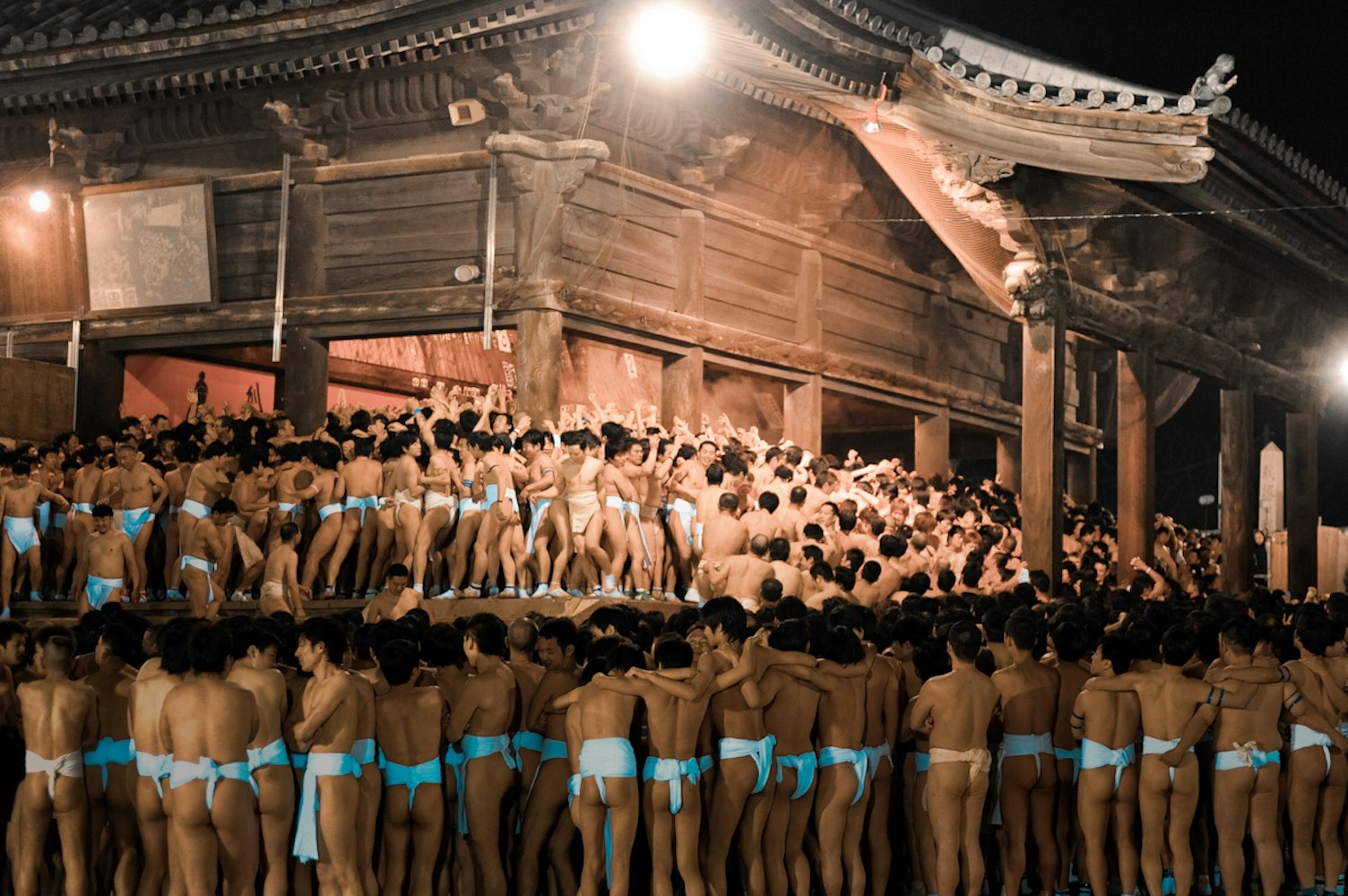
Image Credit: Mstyslav Chernov/ UnFrame
The festival reaches its peak during the "Shingi Maki" ceremony, where a priest throws sacred wooden sticks called 'shingi' into the crowd. The event turns into a frenzied scramble as everyone attempts to catch or retrieve these shingi. This spectacle is not merely about the thrill of the chase; there's a deep-seated belief that securing a shingi ensures a year of happiness and good luck. This belief, which has prevailed for centuries, demonstrates the enduring power of tradition and the strong community bonds forged during such events. The Hadaka Matsuri stands as an emblem of the blend of spirituality, perseverance, and camaraderie that uniquely characterizes Japanese culture.
Kanamara Matsuri, or the "Festival of the Steel Phallus," is a vivid demonstration of Japan's open-minded approach to celebrating all aspects of life. Held annually in April at the Kanayama Shrine in Kawasaki, this festival is a colorful event that draws both locals and international tourists. The celebration traces its roots back to the Edo period when the shrine was popular among sex workers who prayed for protection against sexually transmitted infections.
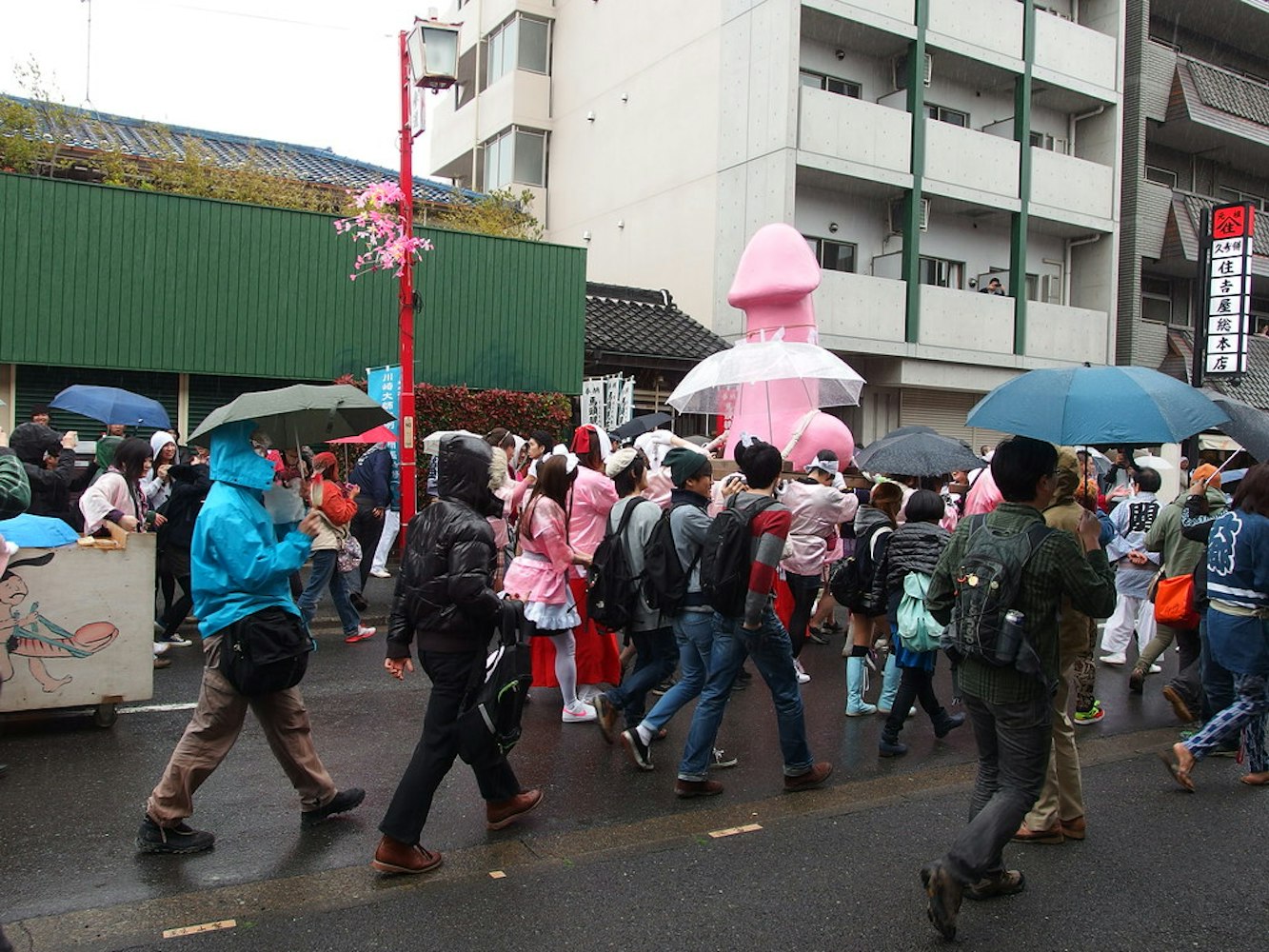
Image Credit: Guilhem Vellut
The main event involves a procession of three phallic-shaped mikoshi, or portable shrines, through the streets, the most famous being a pink one named "Elizabeth," donated by a drag queen club. While this festival's main theme might be amusing for some, it's a serious event with a meaningful purpose. Proceeds from the festival are directed toward HIV/AIDS research, demonstrating how an event that began as a prayer for protection among a vulnerable group has evolved into a broader effort to safeguard public health.
In a unique celebration of life and health, Japan hosts the 'Naki Sumo', or 'Crying Baby Festival', annually at Sensoji Temple in Tokyo. The festival, dating back some 400 years, involves an unlikely spectacle - sumo wrestlers, or 'rikishi', trying to make babies cry. The unusual contest sees these rikishi hold babies born in the same year, endeavoring to make them cry through a variety of tactics, from making faces to gentle shaking.
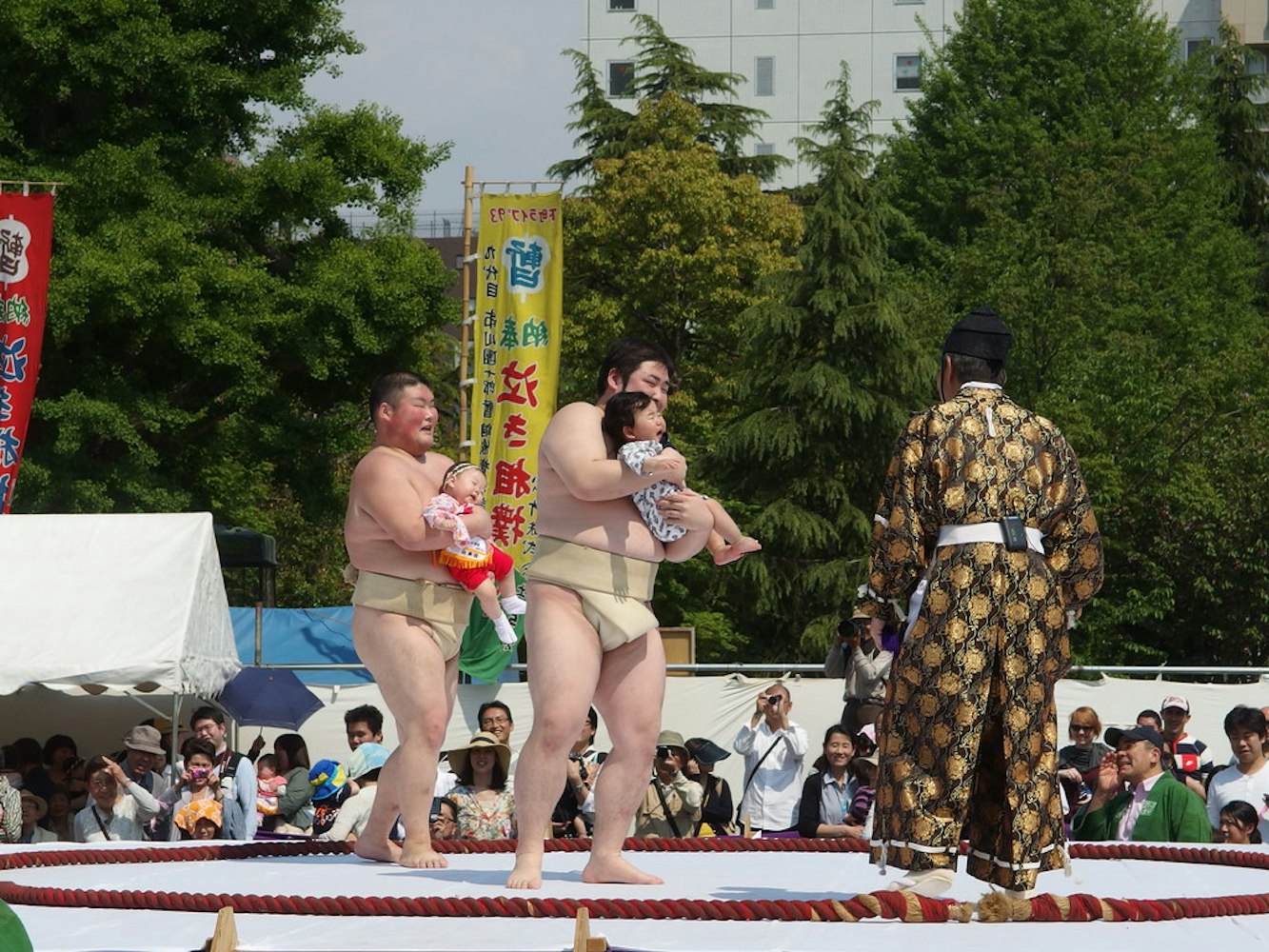
Image Credit: Guilhem Vellut
While it might seem peculiar, this event is rooted in a traditional belief embodied in the saying "Naku ko wa sodatsu", which means "crying babies grow fat." The loud cries of the babies are considered to ward off evil spirits, thereby ensuring their health and protection. The festival, despite its unconventional nature, underscores universal themes of parental hopes for a child's health and growth, showcasing the unique ways in which different cultures celebrate these universal sentiments.
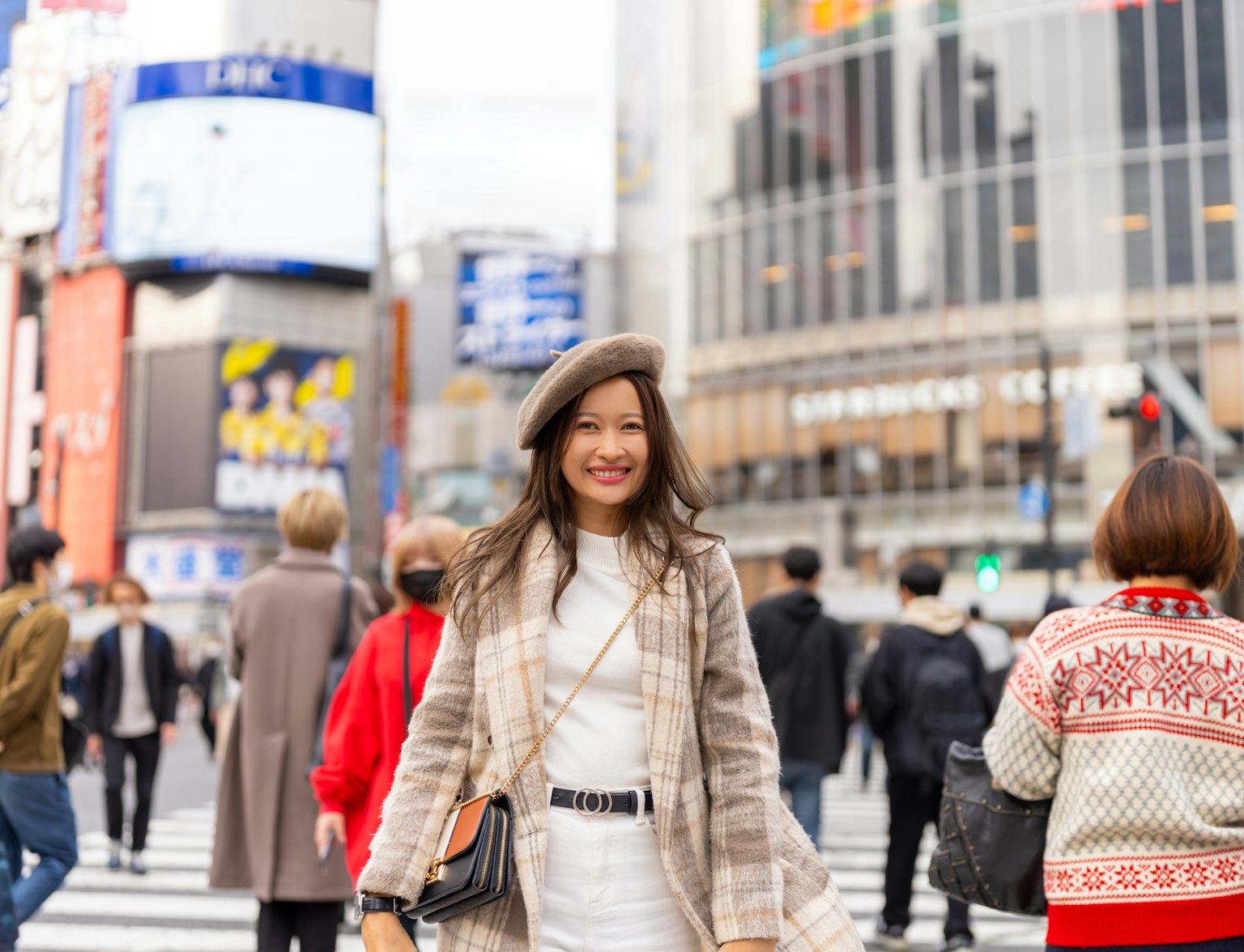
Visit Senso-ji Temple on a walking tour.
In Nagano Prefecture's Lake Suwa area, the Onbashira Matsuri, or "Log Riding Festival," is a powerful demonstration of Japan's long-standing appreciation for nature and spirituality. Held every six years, this festival, dating back 1,200 years, involves the community in a thrilling and dangerous event that simultaneously embodies religious observance and physical fortitude.
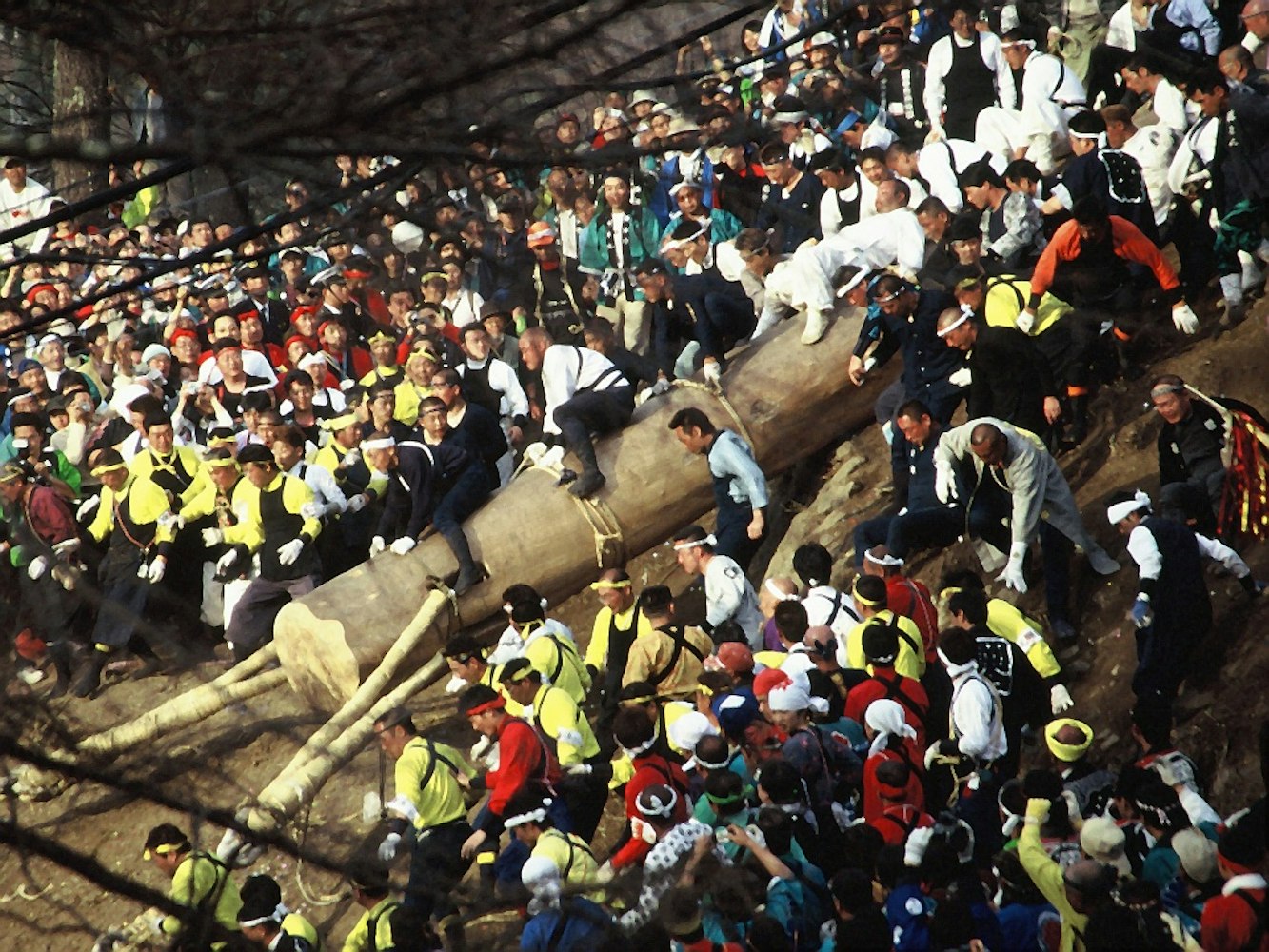
Image Credit: Wikimedia
The festival centers around 16 large fir trees, or 'Onbashira', which are felled, stripped, decorated, and then ridden down steep hills by brave locals in practice known as 'Ki-otoshi.' This is more than just a daring spectacle—it signifies the renewal of the Suwa Grand Shrine and is a testament to the courage, endurance, and strong community bonds of the participants. The Onbashira Matsuri offers an exciting glimpse into the way Japanese culture intertwines nature, spirituality, and tradition in unique and enduring ways.
Every autumn, on the island of Miyako-jima in Okinawa Prefecture, the unique and somewhat eerie Paantu Punaha, or "Mud Monster Festival," takes place. This festival centers around 'Paantu,' supernatural entities draped in mud and foliage, embodying local folklore, spirituality, and communal celebration in a truly distinct manner.
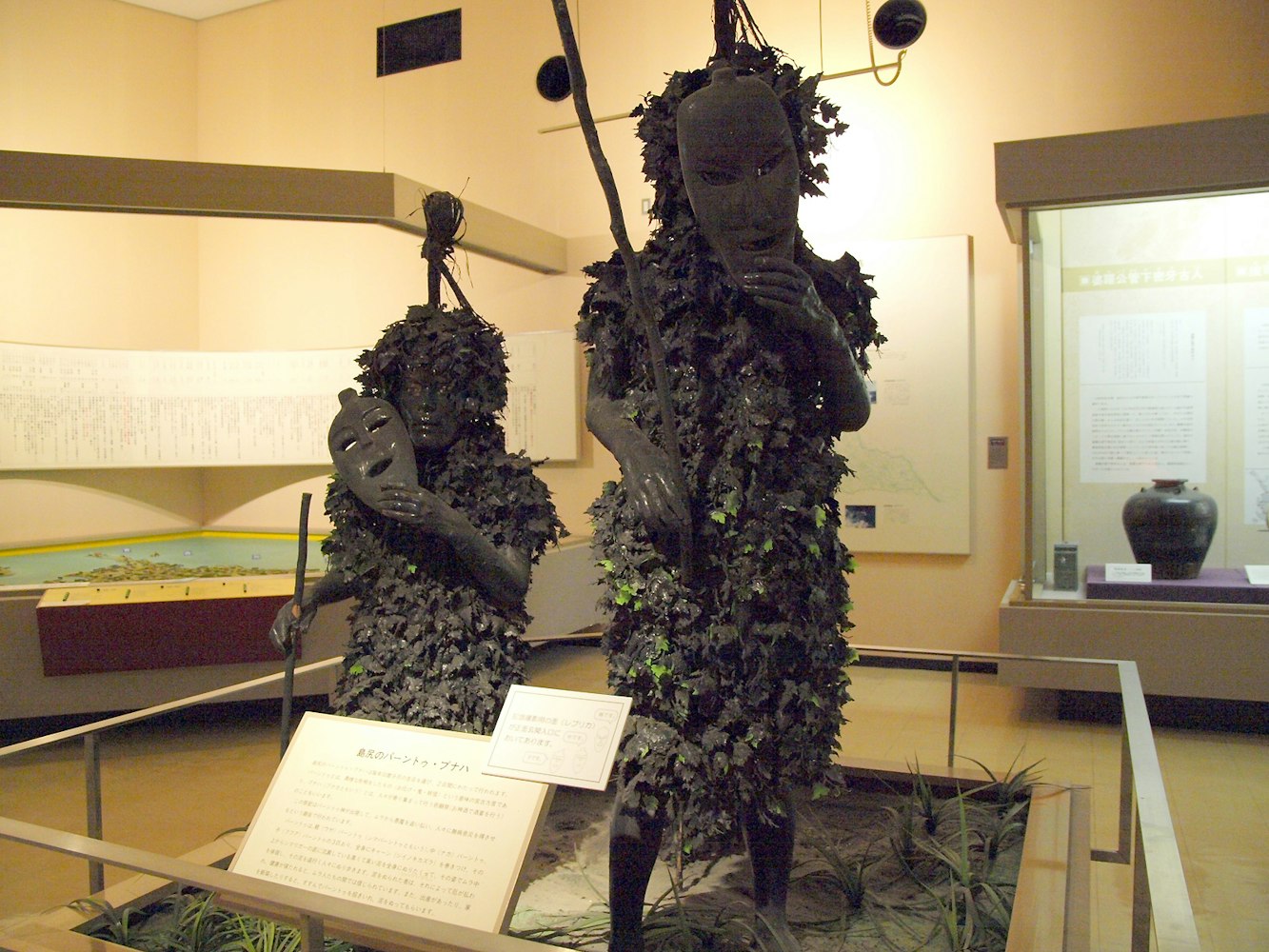
Image Credit: Wikimedia
Throughout the festival, participants wearing masks represent the Paantu, wandering the streets and smearing mud on houses, objects, and people. Rather than causing dismay, this mud-slinging is considered a blessing, believed to fend off bad luck and invite good fortune. The Paantu Punaha, while seemingly peculiar, is a positive celebration of the power of supernatural forces and community spirit. It offers a window into the deep-seated folklore and spirituality that permeate daily life in Japan, revealing a fascinating, lesser-known aspect of the country's cultural mosaic.

Explore more of Okinawa.
Every August, the city of Aomori in northern Japan comes alive with the vibrant colors and jubilant energy of the Aomori Nebuta Matsuri, or the "Giant Lantern Festival". This event, one of the largest and most famous festivals in all of Japan, is a dazzling display of creativity, craftsmanship, and community spirit.
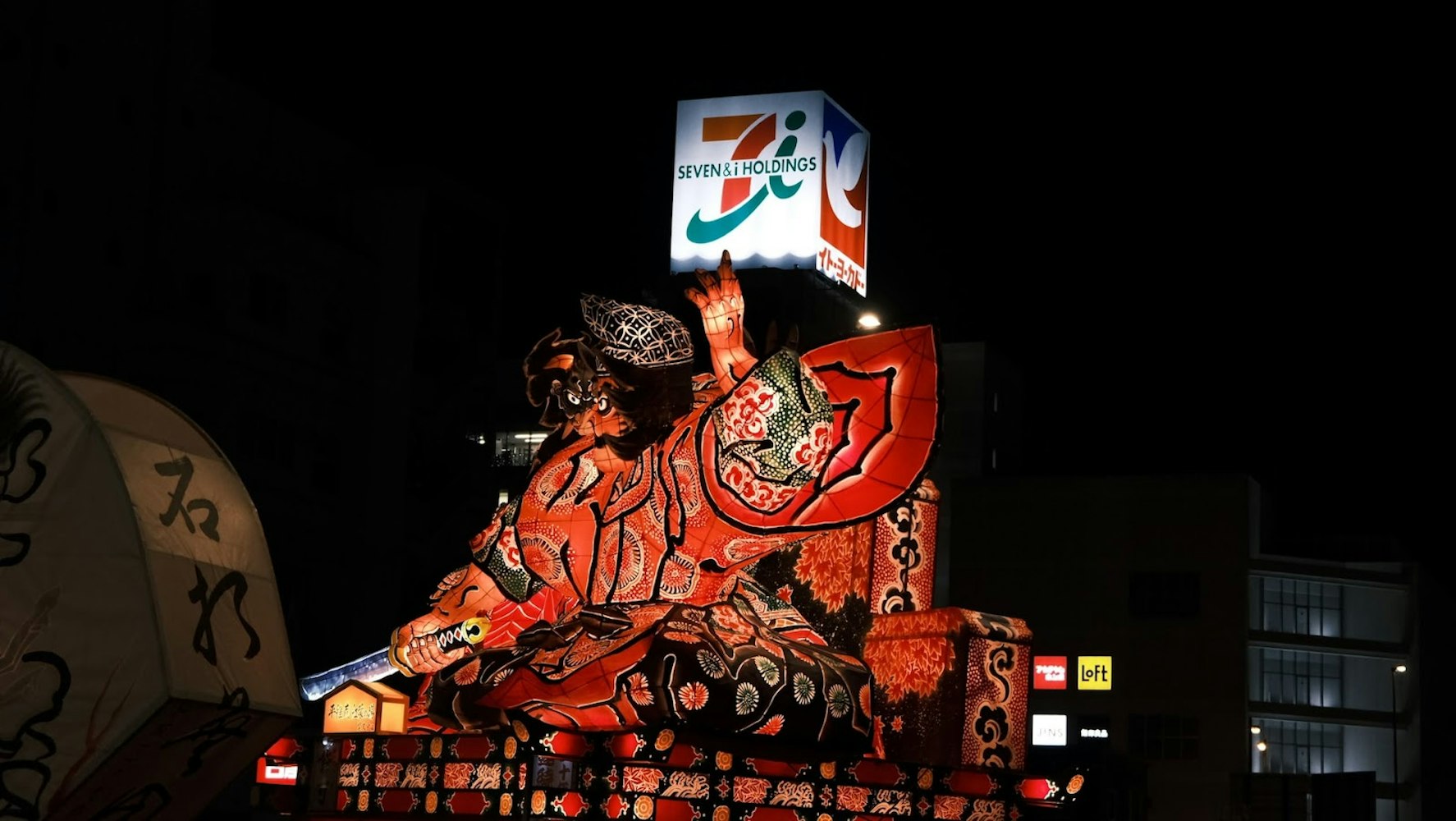
The highlight of the festival is the parade of 'Nebuta' floats, giant lanterns crafted meticulously from washi paper and wireframes. These lanterns are painted with intricate designs, often depicting scenes from Japanese folklore and history. At night, the lanterns are illuminated from within, transforming the city into a moving gallery of glowing artwork. The procession of these brightly lit Nebuta floats is accompanied by traditional music and dancers performing the 'Haneto' dance, creating a spectacle of light, color, and movement.
The Tochigi Wanpaku Kinoshita Matsuri, also known as the "Mud Festival," turns the tranquil city of Tochigi into a lively playground of mud and laughter. This annual event embraces the joy of getting messy, bringing together people of all ages to revel in the simple pleasure of playing in the mud. At the Kinoshita Muddy Rice Field, participants enthusiastically dive into the muddy depths, engaging in mud fights, mud slides, and mud-related activities that create a carefree and exhilarating atmosphere.
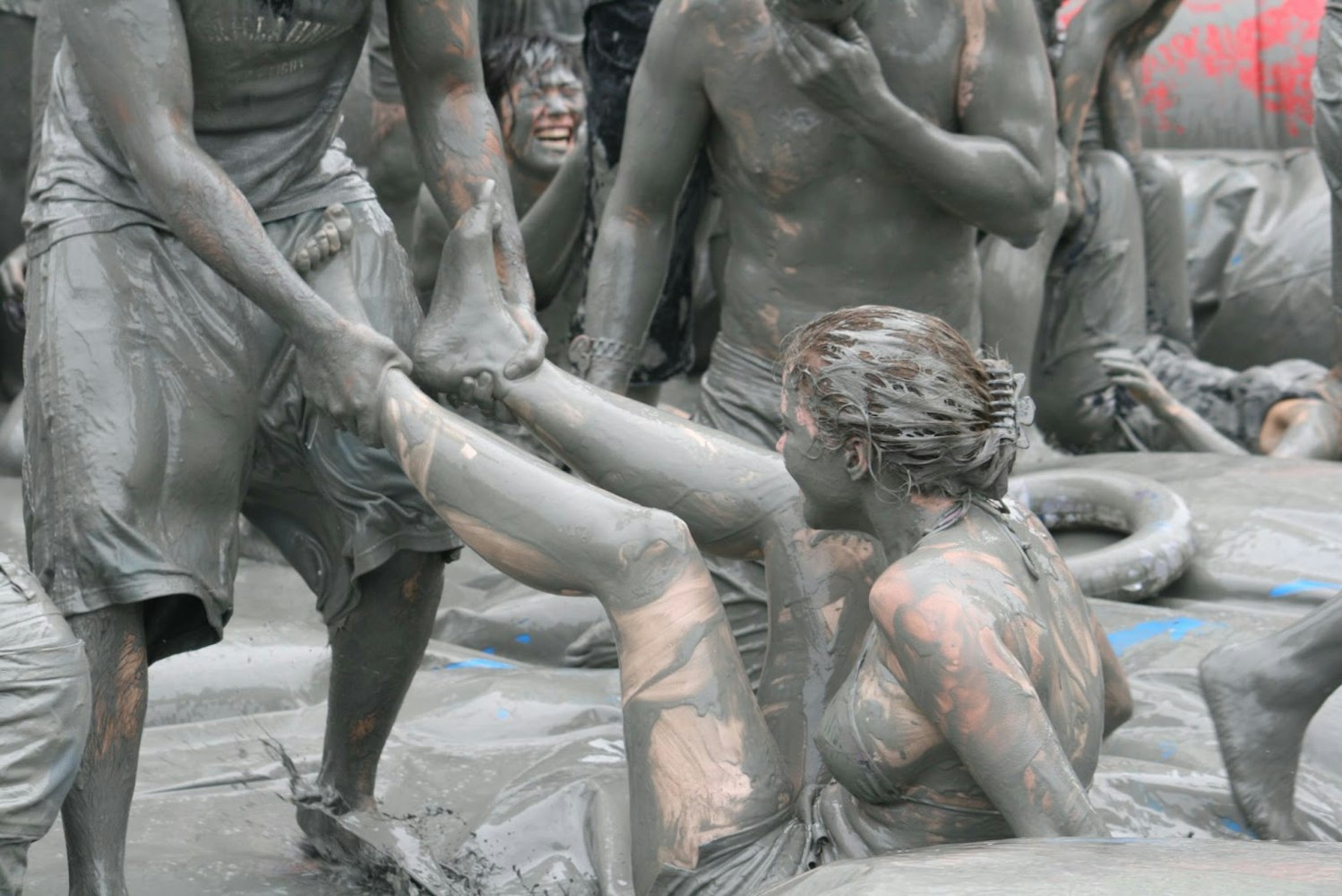
The Tochigi Wanpaku Kinoshita Matsuri celebrates the beauty of simplicity, reminding us of the happiness that can be found in the most unexpected places. It fosters a sense of community and camaraderie as participants join in the shared experience of mud-filled fun. This festival encapsulates the spirit of finding joy in the simplest of pleasures, making it a cherished and unique event in Japan's cultural landscape.
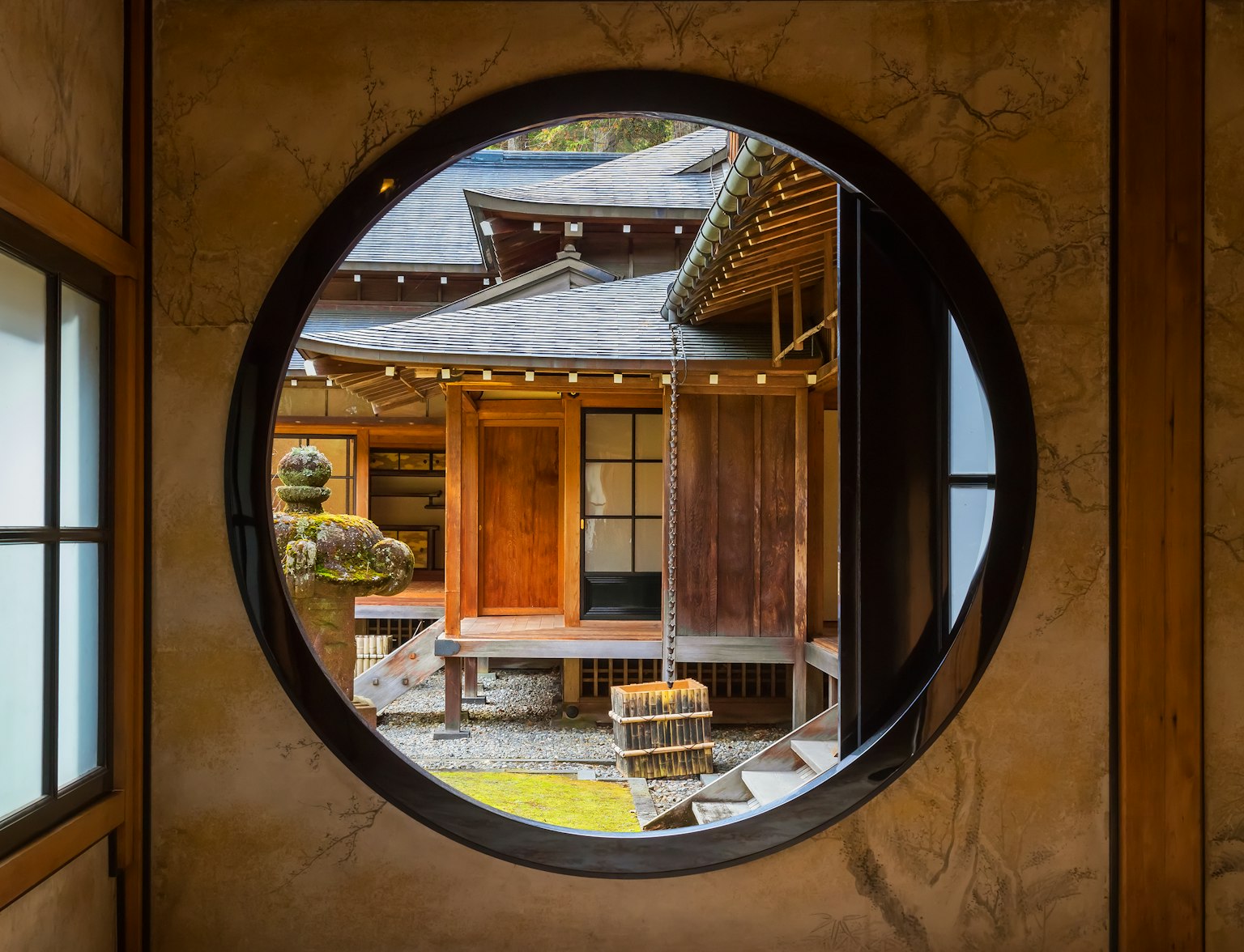
Explore the nearby Nikko after the festival experience.
Tori-no-Ichi, or the "Rake Festival," is an enchanting event that takes place annually in November at various shrines across Tokyo. This festival, deeply rooted in Japanese folklore, revolves around beautifully decorated rakes called 'kumade'. These ornate rakes, adorned with vibrant paper streamers, lucky charms, and auspicious symbols, are believed to bring good luck and prosperity.

During the festival, bustling market stalls line the streets, offering a dazzling array of kumade for sale. Visitors and locals eagerly purchase these rakes, seeking blessings for success and prosperity in the coming year. The festival's lively atmosphere, filled with vibrant music, enthusiastic chants, and the captivating sight of intricately adorned rakes, reflects the enduring belief in luck and the power of symbolism in Japanese culture. Tori-no-Ichi is a celebration of commerce, entrepreneurial spirit, and the pursuit of fortune, making it a fascinating testament to the cultural traditions that thrive in modern-day Japan.
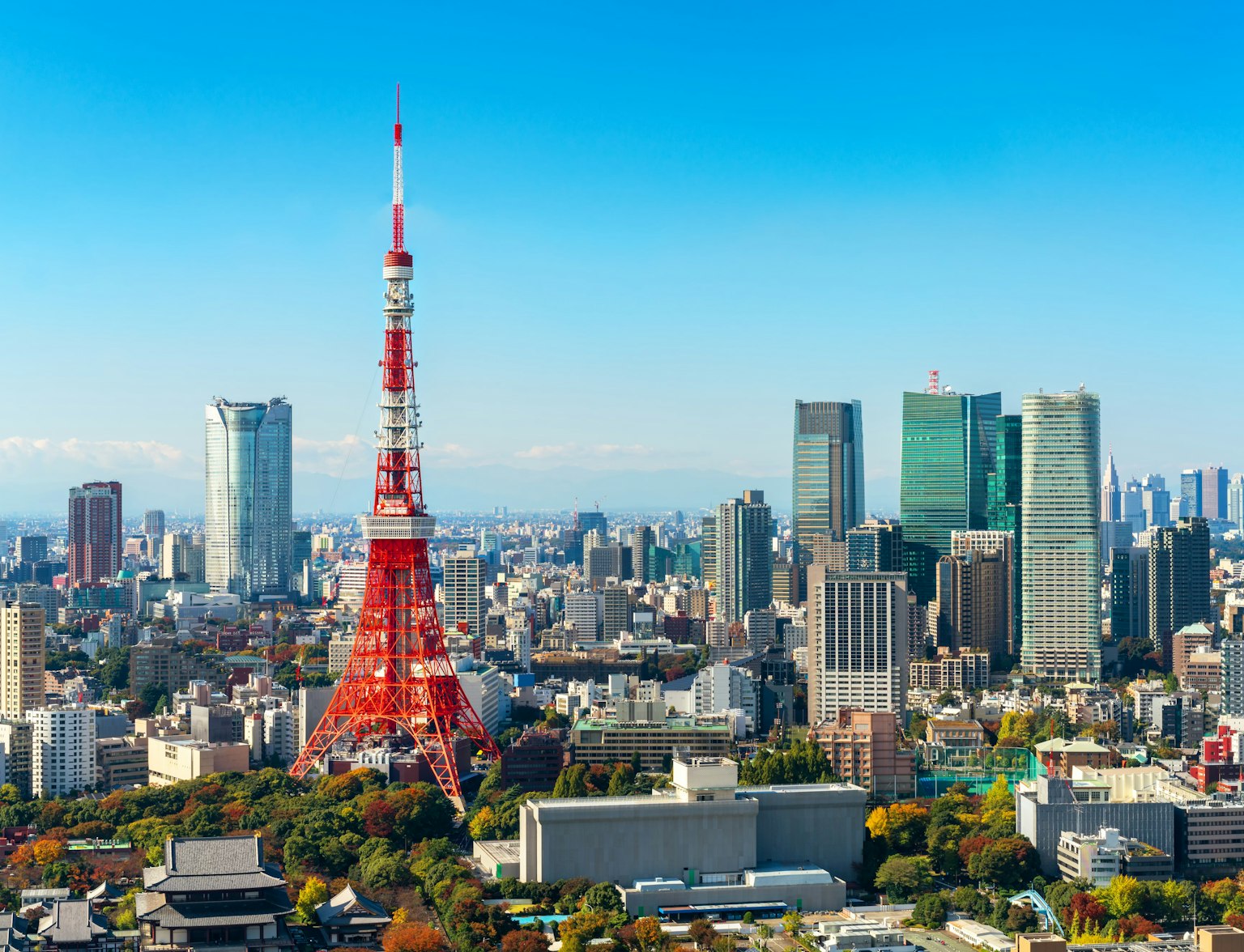
Explore Tokyo's shrines with a private vehicle.
Yamayaki, also known as the "Mountain Burning Festival," is a captivating and awe-inspiring event that takes place annually in the city of Nara, Japan. This unique festival combines ancient tradition, religious rituals, and a mesmerizing spectacle that lights up the night sky.
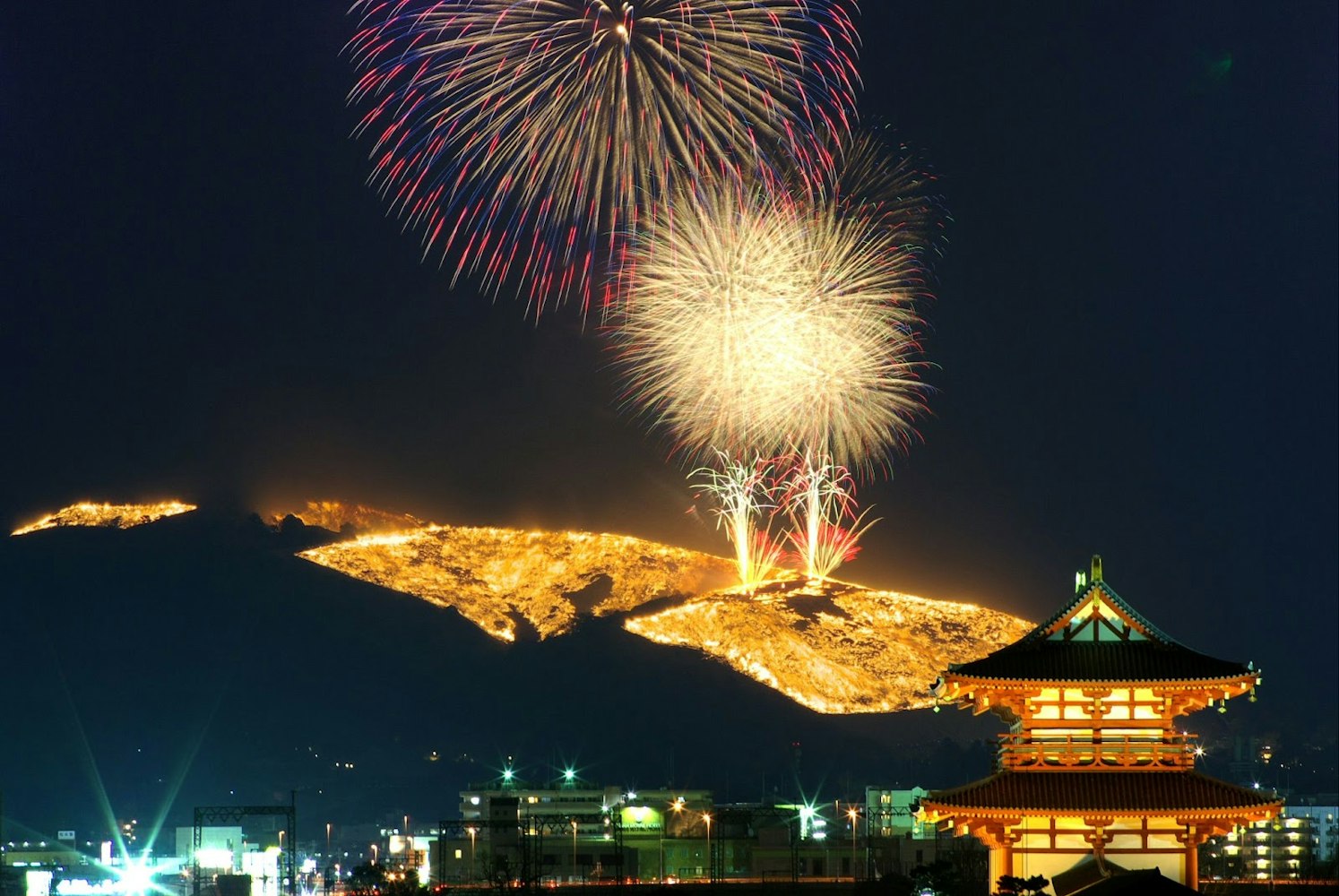
The highlight of Yamayaki is the symbolic burning of Mount Wakakusa, a picturesque hillside that overlooks the city. The origins of this tradition are shrouded in legend, but it is believed to have started as a way to ward off evil spirits and ensure a prosperous year. The festival begins with a ceremonial torchlight procession led by Buddhist priests and local participants dressed in traditional attire. The torches are then used to set fire to the dry grass on the mountainside, creating a dramatic and breathtaking display of flames that illuminate the darkness.
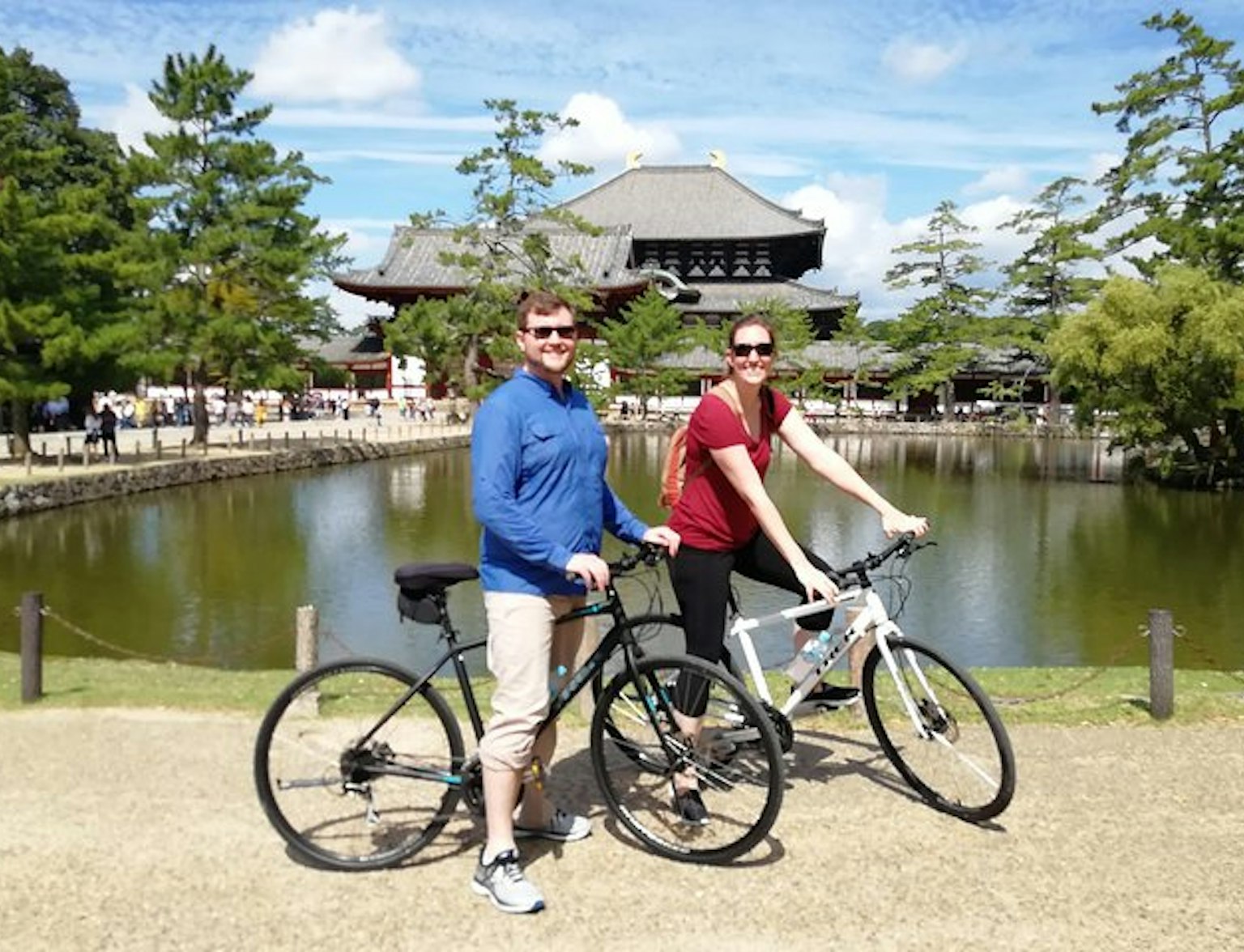
Tour Nara with a bicycle.
Deep in the valleys of Shikoku, Japan, the Nagoro Doll Festival casts a mesmerizing spell each year. This unique event, held in the village of Nagoro, showcases the remarkable talent of local artist Ayano Tsukimi through her collection of lifelike dolls. What sets the Nagoro Doll Festival apart is the sheer quantity of dolls that adorn the village. Ayano Tsukimi has meticulously crafted thousands of life-sized dolls, each one representing a former or departed villager. These uncannily realistic dolls can be found scattered throughout Nagoro, from gardens to classrooms, creating an ambiance that is simultaneously enchanting and thought-provoking.
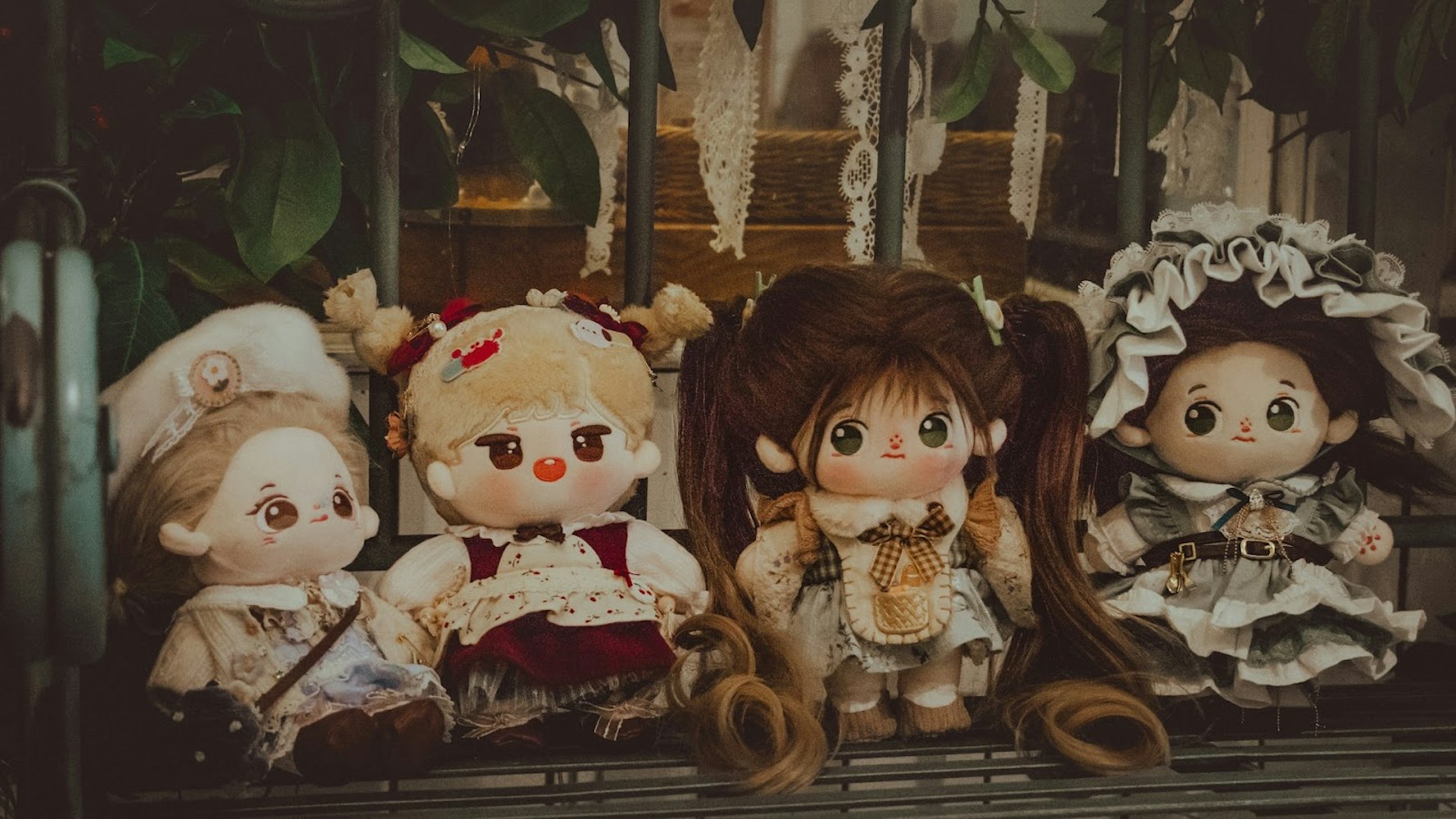
The Nagoro Doll Festival provokes introspection and contemplation, serving as a poignant reminder of the passage of time and the transient nature of human existence. It draws visitors from far and wide, drawn to the ethereal charm and the opportunity to pay tribute to the memories of a fading community. This extraordinary display of artistry leaves an indelible impression, making the Nagoro Doll Festival a hauntingly captivating experience that lingers in the hearts of those who witness it.
Japan's Quirkiest Festivals unveil a captivating world of unique traditions, showcasing the Japanese people's vibrant culture and their remarkable ability to embrace the extraordinary. From the mesmerizing Yamayaki and the thought-provoking Nagoro Doll Festival to the lively Tori-no-Ichi Rake Festival and the adventurous Tochigi Wanpaku Kinoshita Matsuri, each event offers a glimpse into the rich tapestry of Japanese customs and community spirit.
By exploring the Quirkiest Festivals in Japan, we gain a deeper appreciation for the diversity and ingenuity that permeate Japanese culture. These celebrations ignite a sense of wonder and inspire us to embrace the unconventional, find joy in the simplest of moments, and foster a deeper connection with our own communities. Ultimately, Japan's Quirkiest Festivals serve as vibrant reminders of the beauty that can be found in embracing traditions, nurturing creativity, and celebrating the wonders of life.
